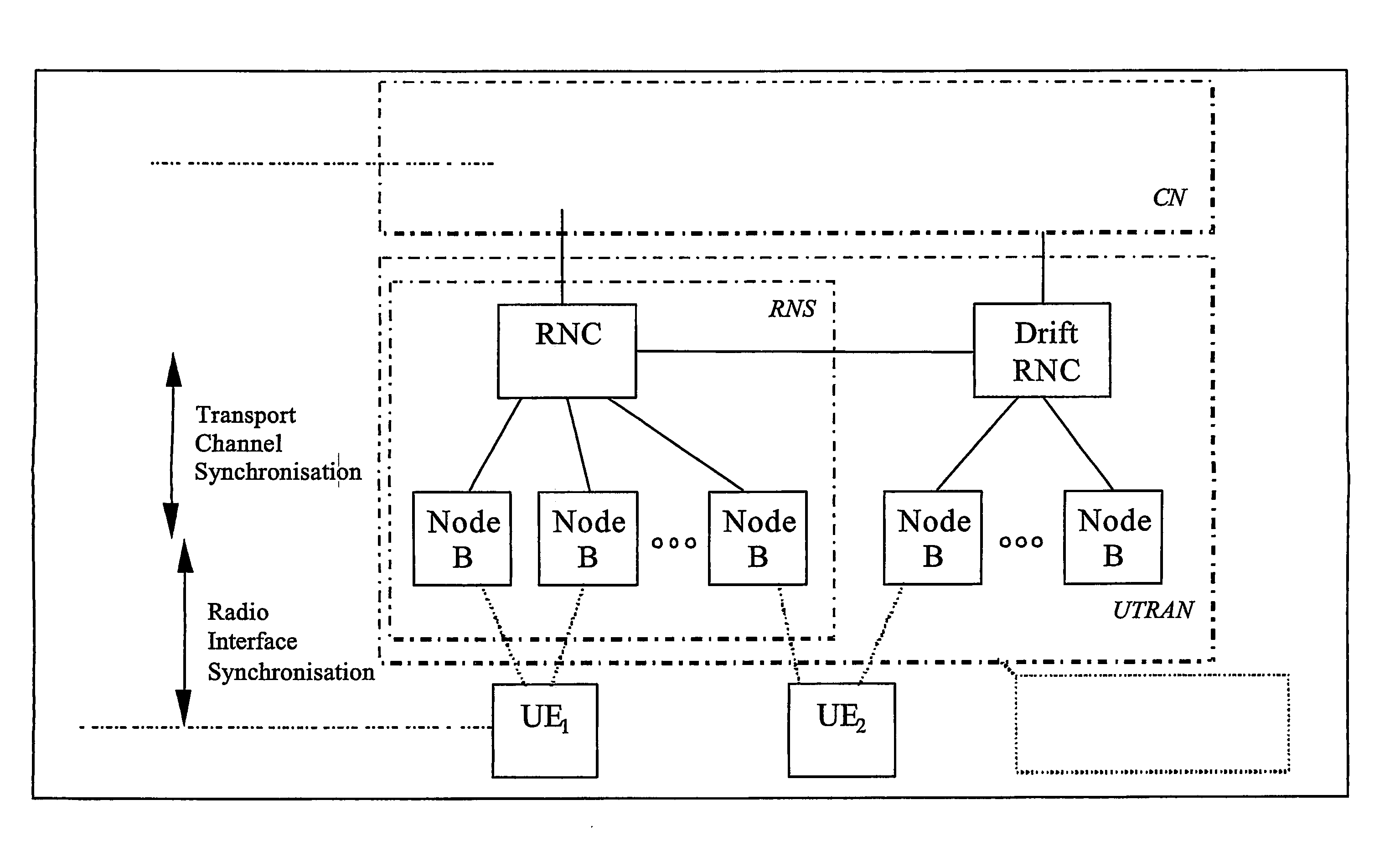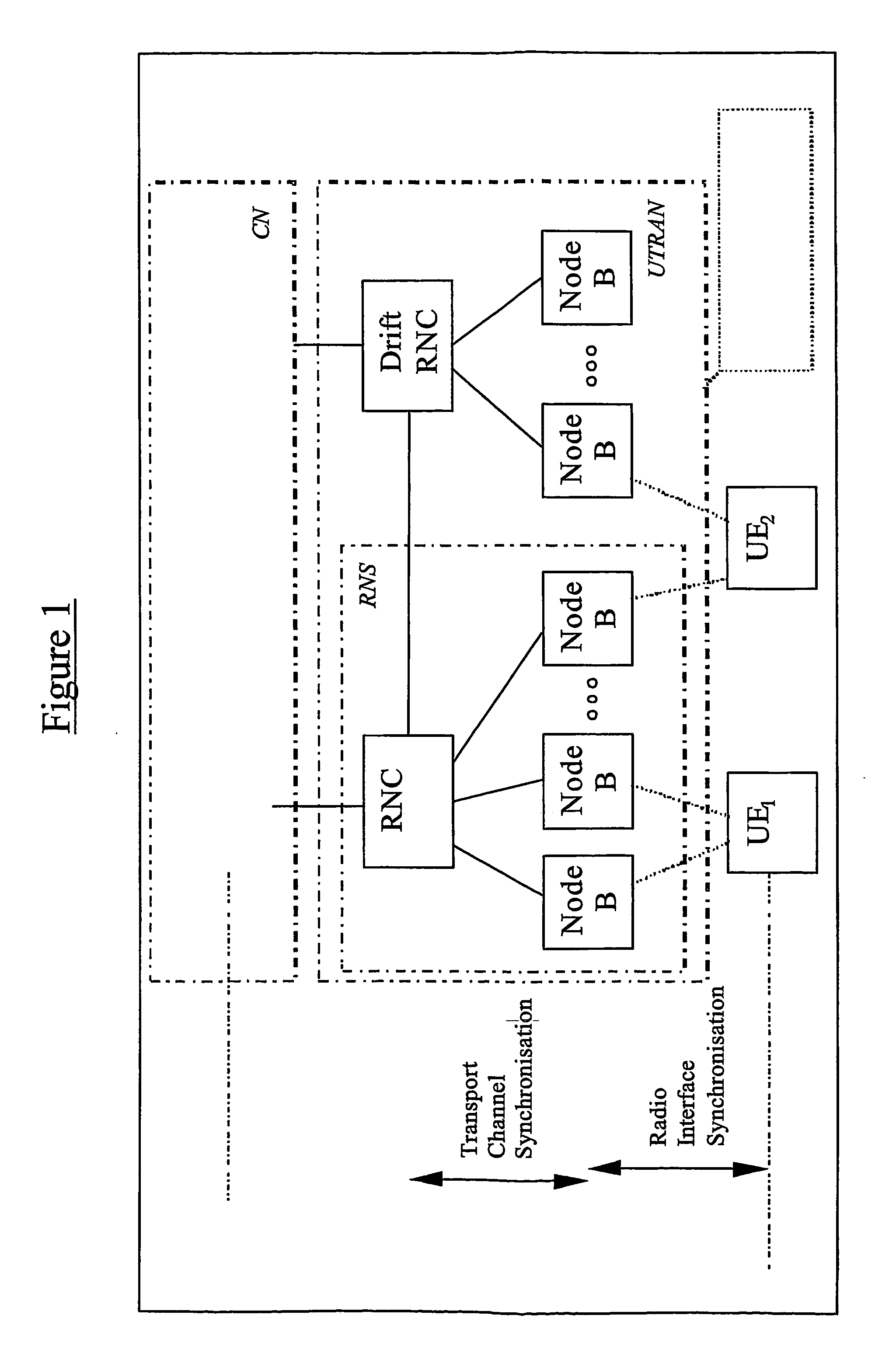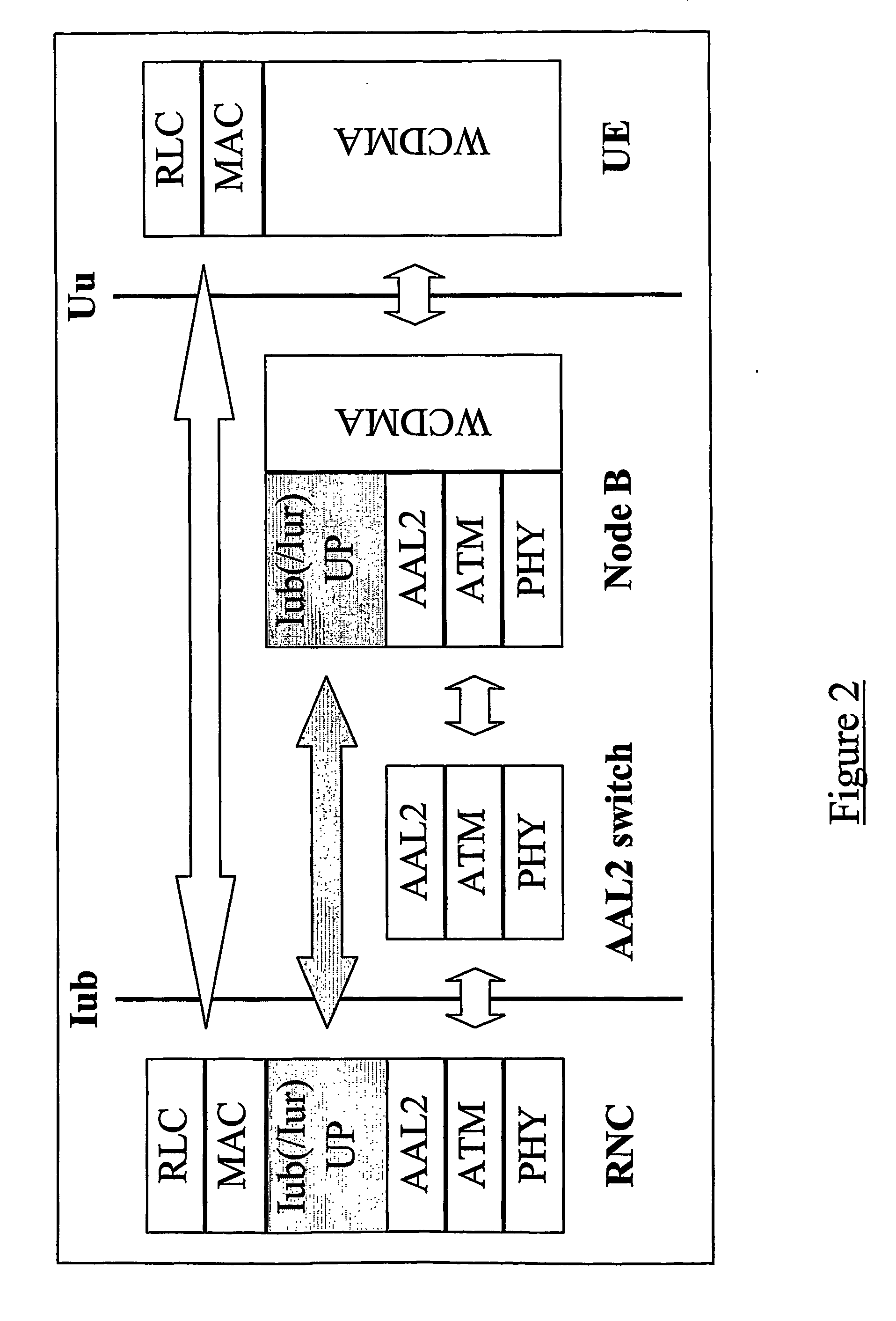Frame synchronisation in a radio access network
a radio access network and frame synchronisation technology, applied in the field of frame synchronisation in the radio access network, can solve the problems of frame synchronisation, potential unnecessary buffering and delays in both uplink and downlink, and not necessarily providing the best possible service for acknowledged mode (am) bearers, etc., and achieve the effect of reducing the timing offs
- Summary
- Abstract
- Description
- Claims
- Application Information
AI Technical Summary
Benefits of technology
Problems solved by technology
Method used
Image
Examples
Embodiment Construction
[0055] The comparably low sensitivity to jittering for packet switched services has made it possible to realize packet switched domain bearers using the Acknowledged Mode RLC. By itself, AM-mode typically also introduces delay jittering, since SDUs suffering from transmission losses are delayed until re-transmissions repair them. In-sequence delivery further increases the traffic burstiness over the RAB egress Service Access Point (SAP). Burstiness is in fact an inherent feature of IP traffic, due to the non-existent QoS guarantees in today's IP backbone networks. In case there are some end-to-end requirements on the delay of the packets, as for Streaming applications, these requirements are typically handled by buffering before play-out.
[0056] In addition, it is noted that no strict pacing of the Frames towards the AM RLC is required. This is true, since the AM RLC cannot maintain any paced delivery over its egress SAPs. At times of low Frame Protocol latency, the RLC round trip t...
PUM
 Login to View More
Login to View More Abstract
Description
Claims
Application Information
 Login to View More
Login to View More - R&D
- Intellectual Property
- Life Sciences
- Materials
- Tech Scout
- Unparalleled Data Quality
- Higher Quality Content
- 60% Fewer Hallucinations
Browse by: Latest US Patents, China's latest patents, Technical Efficacy Thesaurus, Application Domain, Technology Topic, Popular Technical Reports.
© 2025 PatSnap. All rights reserved.Legal|Privacy policy|Modern Slavery Act Transparency Statement|Sitemap|About US| Contact US: help@patsnap.com



